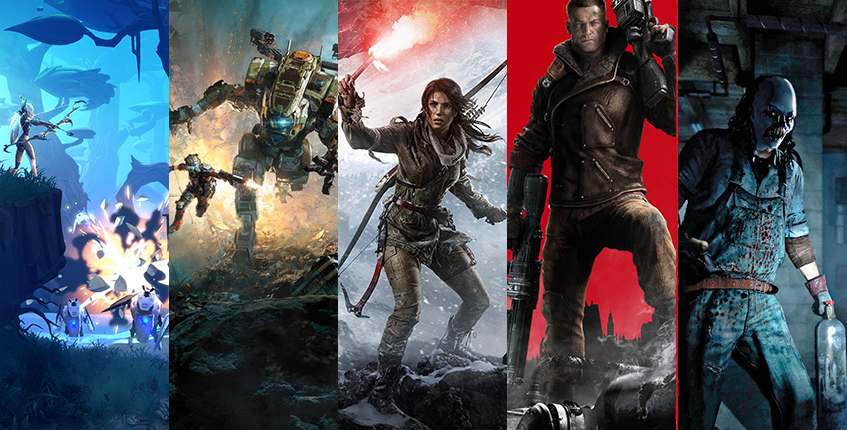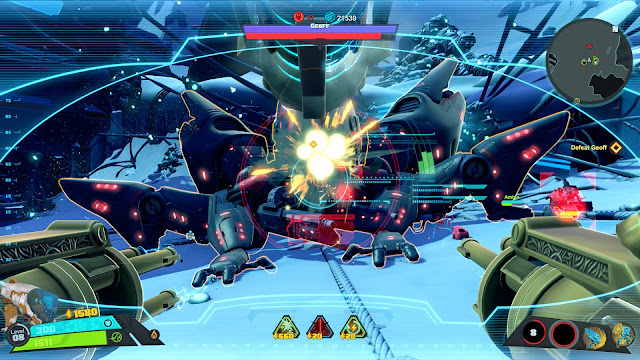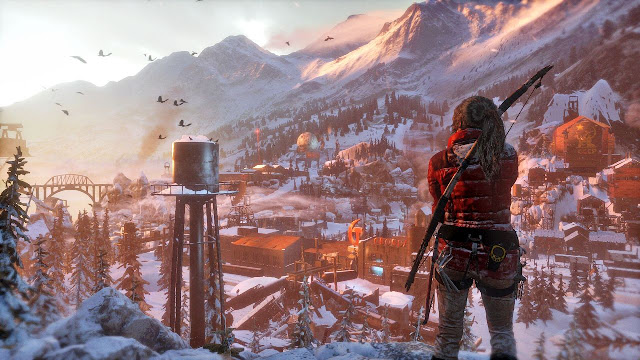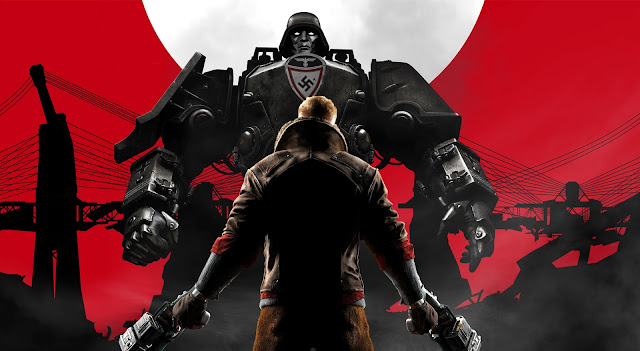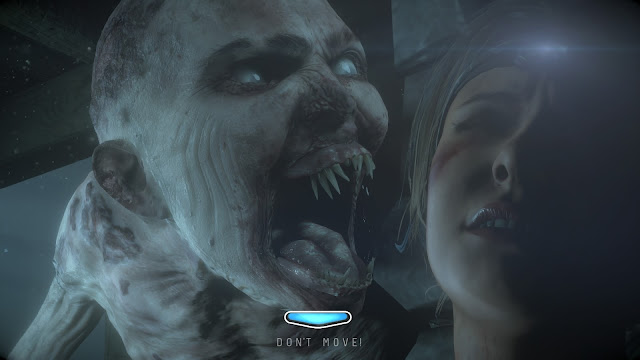Maybe you came across a gem you had no previous idea about such as Firewatch (Everyone who hasn’t should play Firewatch before you do anything else with your life) or you take a chance on that new Call Of Duty game you’ve seen a trailer for every day on TV for the last 2 months. The truth is that every developer and publisher wants to contribute to the projects that break the cultural zeitgeist.
Obviously not every game manages this. For every smash hit there’s a game that causes little more than a ripple in the deep sea of gaming. And while sometimes that’s down to flawed development or a lack of creativity, sometimes it’s the result of the marketing machine never quite working at full capacity.
Battleborn
Oh Battleborn, how you were mistreated. Published by 2K Games and developed by Gearbox Software, the guys who bought you the Borderlands series, Battleborn set out with intentions of taking the basics of first person shooters and mixing it in with a horde of characters all with different skill sets.
The problem was those guys at Blizzard, you know, the developer that created World Of Warcraft and in 2015 generated $1.1 billion in revenue? Yeah those guys. Also planned to release their new gaming project Overwatch just three weeks after Battleborn. Both games at their core were relatively similar, taking an online-only approach with an array of different characters wielding a variety of different abilities, Overwatch followed through with a much more competitive online multiplayer space which was fast paced, skilful and addictive.
As expected, Overwatch slaughtered Battleborn both commercially and critically, with Blizzard’s new gaming storm boasting 10 million players by mid-June. Its competitor, however, was quickly discounted and saw its mediocre player base quickly diminishing, with rumours surfacing that the game was headed towards a free to play model.
Microsoft have done an incredible job levelling the playing field in the console war against Sony. With the release of the Xbox One S, announcement of Project Scorpio and the still excellent Gears Of War 4 – this is a new state of affairs.
At the time it seemed like a strange decision for a publisher such as Square Enix, who have such a history with PlayStation to make such a call, and for developer Crystal Dynamics. It put them in a pretty difficult spot. Despite the game being generally excellent, Rise Of The Tomb Raider suffered somewhat poor sales, selling less than 70,000 units on its day of release in the UK competing with Fallout 4 that had been released three days earlier.
With longstanding first party titles like Forza, Gears Of War and Halo preceding Lara, surely it would have made more sense to bestow Croft’s latest adventure on us first? All three aforementioned series hold such a huge fan-base dear to them that they could pretty much be released any time of year and sell huge amount. A series such as Tomb Raider, for example, which has generally been on a multitude of platforms in the past would need as many sales opportunities as possible to really make some noise. ‘
With a series spanning over 30 years, Wolfenstein: The New Order is one of the truly underrated games of 2014. With an interesting story set upon the premise that Germany won the second World War, satisfying gameplay and intuitive upgrade system, the game was about as solid as it could possibly had been from a strictly gaming perspective. Credit to Machine Games who did an all-round excellent job bringing the franchise to next gen.
With Bethesda at the publishing helm, all signs should have pointed to The New Order being pushed on all possible fronts. Keep in mind that the game came out in February of 2014, meaning that it was one of the first big hitters to come out on the latest iteration of hardware we had at the time since the launch titles. If history tells us anything, it’s that launch titles are generally far from great.
What we got instead seemed to be Bethesda saying “Erm, here’s a first person shooter while we push everything we can into The Elder Scrolls Online”. Damn you, Bethesda. Blazkowicz’s manly face deserved more, and even though DLC ‘The Old Blood’ was released later on, the time to put the game at the forefront had pretty much passed.
While Wolfenstein still managed to sell well, topping the sales charts for the week it was released in the UK, it somewhat defies logic how the game wasn’t pushed more. We’re still losing sleep over how popular Wolfenstein could have become with just a little more support from Bethesda.
Until Dawn
Now this, this is a strange one. Back in the early months of 2015, Sony were starting to face criticism over their notably short amount of first party exclusives hitting the PS4. 2014’s holiday season saw a lack of huge exclusive games hit the platform with games like The Order 1886 being pushed back to early 2015.
As 2015 hit, Sony had at least three exclusives that were guaranteed for the first half of the year: Bloodborne, The Order 1886, and Until Dawn. Both Bloodborne and The Order 1886 were released within a couple of weeks of each other, which raised eyebrows at first. What seemed even more confusing was how The Order was built and pitched as what could catapult itself into a huge franchise for the system. What followed was neither and due to uncreative, repetitive gameplay and a short story, the game flopped critically and sales of the game took a sharp nosedive.
What was expected to follow was a huge push behind Until Dawn, originally pitched as a PlayStation Move game on PS3 and then moved over to PS4. Until Dawn saw the player take control of a group of teenagers fighting for survival overnight in a house situated in the middle of the woods. The intuitive gameplay and narrative relied on players’ choices to determine how the game ended.
Despite Until Dawn being an inventive and compelling game, Sony gave it surprisingly little attention, with the game rarely being thrown into console bundles, and an even starker amount of social media marketing.
In fairness, the questions surrounding Titanfall 2 go further than just marketing and also could be pointed at the series as a whole as opposed to just the latest instalment in the franchise.
The original Titanfall was an Xbox One exclusive as well as being an online only multiplayer shooter. Released in early 2014, it came as Microsoft’s first big exclusive title with the launch of the Xbox One. While the game sold well, ultimately the lack of a story mode hurt the reputation of the game left a whole in the package that undermined the quality of the experience for many.
It was announced not too late after the release of the original Titanfall, that a second would indeed be multi-platform. No matter how much spin you put on it, this comes across as publisher EA, and developer Respawn, saying “Man, we sure wish the first was on PS4 too”. Whether that is true or not remains to be seen, however, it is clear to see that the game would have benefitted greatly from being multi-platform to begin with.
Fast forward just over two years and Titanfall 2 shows up on the reels of EA’s E3 2016 show, with an announcement that the game will feature a campaign as well as being available on PS4. People were understandably excited. The game then gets slated for a worldwide release date of October 28th 2016. The same date as Skyrim Remastered, one week after Battlefield 1, and one week before Call Of Duty: Infinite Warfare. Oh dear.
It seems as if Respawn are a team that have almost had their hands tied since day one with the Titanfall franchise – with the original being an online only, exclusive game, and the sequel expected to throw fists with two of the biggest franchises in existence.


